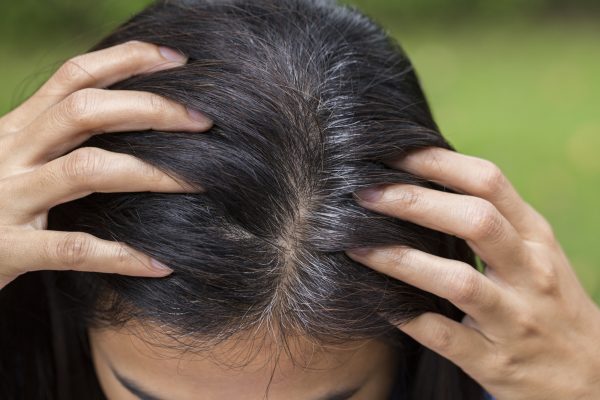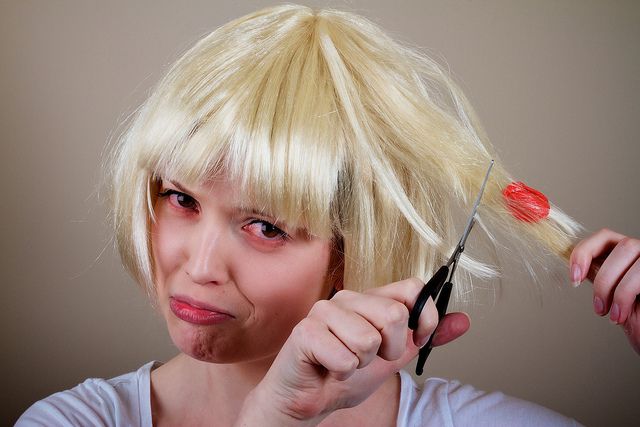When you don’t know what your hair type is, it might be tough to discover the proper products. If you have curly hair with a diverse texture and little definition, you most likely have 4B hair. We’ve got you covered whether you’re new to the typing system or a seasoned veteran when it comes to keeping your curls in control.
We prepared the comprehensive guide to type 4B hair with the aid of hairdresser Charlotte Mesah, trichologist Kari Williams, Ph.D., and curly hair specialist Dillan Bawamia. Continue reading to learn more.
GET TO KNOW THE EXPERT
- Charlotte Mensah is a hairdresser, author, and the creator of the Manketti Oil hair care line.
- Dr. Kari Williams is a trichologist and hairdresser. Halle Berry, Chloe Bailey, and Ava DuVernay are among her clientele.
- Dillan Bawamia specializes in curly hair. He also works as the salon manager at Textures Salon London.
What Is Hair Type 4B?
Mensah describes type 4B hair as having a similar form to type 4C hair, with the only changes being differences in density and coarseness. “Because the hair bends at a steep angle, 4B hair has a less distinct pattern of curls and looks more like a Z shape,” Mensah explains. 4B curls are also extremely tight, making them simple to handle.
How Is Type 4B Hair Recognized?
The curl pattern is the key to recognizing 4B hair. Because 4B curls do not produce a consistent curl or coil, the zig-zag pattern is formed. Williams also mentions that 4B curl patterns contain acute angles. Type 4B hair also has a fluffy appearance and a dry feel. Although these are the primary characteristics of 4B hair, bear in mind that no two 4B hair procedures will be the same because all 4B hair is unique.
It is essential to pay attention to the health and happiness of your hair in line with the regime you are following. Another thing to keep in mind is that persons with 4B hair may have patches of 4A and 4C textures across their heads.
You may also like: Understand Your Curly Hair Types In This Guide
What Makes Type 4B Hair Unique From Other Hair Types?
According to Williams, the most noticeable distinction between 4B hair and other hair types is the less defined curl pattern. Because type 4A hair retains moisture efficiently, it does not shrink as much as type 4B hair. Type 4A curls are also much more defined, whereas type 4B curls are smaller and might have a gritty texture.
Type 4C hair is reported to have the tightest curl pattern of any curly hair type; nevertheless, because the strands are tight and springy, it is just as prone to shrinking as type 4B hair. In 4B hair, shrinkage can range between 50 and 75 percent. A large quantity of moisture, low dependency on heat, and regular protective styling are essential to get the most out of type 4 curls.
How Should Type 4B Hair Be Cared For?
Because type 4 hair is prone to breakage, you may be on the hunt for new products and procedures to revitalize your curls. “It’s vital to remember that all curls necessitate the following steps: washing, conditioning, lubricating, and as little manipulation as possible to avoid breaking,” Williams explains. In addition to these necessary actions, there are other easy techniques you can incorporate into your regimen to maintain your curls happy and healthy.
Improve Your Wash Day
Wash day routines are critical to hair health, therefore it’s critical to use the correct products to wash, detangle, and style hair. Mensah suggests cleaning 4B hair once a week with a moisturizing shampoo like Charlotte Mensah Manketti Oil Shampoo ($31) or Aveda’s Be Curly Shampoo ($27).
Both include additional emollients, which act as a protective barrier, hydrating, softening, and smoothing the hair. Emollients are also utilized in leave-on and rinse-off conditioning products to add shine and softness to hair.
“I advocate using a rinse-out conditioner to get the most out of these hydrating shampoos,” Mensah advises.
Co-washing may improve 4B hair types, but Williams cautions that it should not be used in place of your usual shampoo. She suggests using the LOC approach for the greatest outcomes.
“I recommend keeping things simple with curly hair,” she advises. “Check the ingredients of any leave-in conditioner you’re using as well. Stop using it if it includes hydrolyzed proteins since excessive use might cause the hair strands to feel dry and brittle.”
According to Bawamia, 4B hair types should avoid co-washing since it does not effectively cleanse the scalp. “Bacteria can build on your scalp and hair if you don’t use shampoo as part of your wash day regimen,” he explains.
The Key to Success Is Moisture
Moisture can assist to moisturize and decrease breakage in 4B hair, which is prone to dryness. Mensah suggests giving yourself a hot oil treatment once a month to lock in moisture and hydrate hair with light cream or oil on a daily basis to guarantee that your hair is getting the hydration it needs.
“Natural hair absorbs moisture like a sponge,” she explains, “so hydrate, moisturize, moisturize.” The steep angles make it difficult for sebum to cover the whole fiber, which is one of the reasons 4B hair lacks moisture. So, if you haven’t already, it’s time to make moisture your friend when it comes to caring for your type 4 curls.
Although hydration is essential for 4B hair, these hair types should avoid using too many products. “A nice leave-in conditioner and a sealant of your choosing are more than adequate for 4B hair. For the greatest results, I recommend applying products to very wet hair “Bawamia states
Silicone should be avoided.
According to Williams, silicone-containing products should hair avoided until a sulfate shampoo is used to eliminate buildup from strands. If 4B hair types utilize silicone-containing products in their hair care routines, they will also need to replace moisture with a moisturizing shampoo.
Pay attention to how your hair reacts to silicone to see whether you can incorporate it into your hair care routine. “Some silicones may work for more tightly coiled patterns, such as 4B hair,” Williams explains, “since they lock in moisture and offer an extra layer of protection to the strands.”
Wash your hair less often…
Although each 4B hair type is unique, individuals with this hair type may find it useful to wash their hair less frequently than normal. Williams suggests using moisturizing shampoos and conditioners if you need to shampoo your hair due to oil accumulation, scalp irritation, or a very busy lifestyle. Remember to apply a leave-in conditioner after each wash and to lock in moisture with a decent oil.
Many naturals dread wash day because giving your hair the TLC it needs may be time-consuming. Because type 4B hair is thick and harsh in texture, washing hair in portions may make wash day a bit more comfortable.
“Washing hair in portions helps clean the hair scalp, which is vital for dense hair types,” Williams explains. “Hair density can make it difficult to effectively wash the hair and scalp, resulting in scalp irritation and dry hair.”
Take care of your protective styles as well.
It is critical for 4B hair types that use protective styling to not ignore their hair once it has been done. “When wearing braids or cornrows, I recommend using a mild oil to your scalp once or twice a week,” Mensah advises.
It’s easy to overlook your covered hair when wearing a protective style, but your protected hair, like your natural hair, requires more hydration. Mensah recommends pampering your hair for five minutes before bedtime by applying moisture (if necessary), fastening the ends, and covering it at night.
Utilize Satin Pillowcases
Satin pillowcases, according to Williams, are a “wonderful addition to include into your hair care routine.” However, it is vital to remember that a satin pillowcase will not be able to restore hair damage on its own. “It’s not your pillowcase that’s causing your hair to be overly dry or breaking,” she says.
What Are Some of the Best 4B Hairstyles and Cuts?
Because 4B hair is so adaptable, there aren’t many restrictions on how it may be styled. Williams suggests angular bobs and spherical halo cuts, as well as “boosting curls with rod sets, twist sets, and braid sets.”
The most essential thing to remember while styling and trimming 4B hair is to do what works for your lifestyle and overall style. Bawamia suggests twisting your hair for a week and wearing it as a twist-out the following week for people who want a low-maintenance approach to haircare.
“This will prevent you from fiddling with your hair too much. Excessive manipulation of 4B hair can actually damage its ends “he claims
Using a gel or curling lotion to clump hair strands together and increase the curl pattern might assist your 4B curls to hang on to protective styles. This might also be a good alternative for naturals who want a wash-and-go haircut. Bawamia suggests visiting the salon for a trim every three to four months for 4B hair upkeep.


